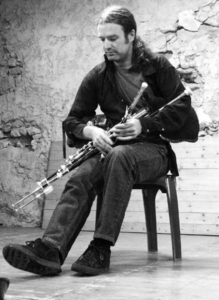 One of the reasons I decided to do this post is because, frankly, I want to learn what the difference is. I’ve always kind of known there is a difference between the Irish and Scottish bagpipes, but I’d never have been able to actually tell you what the difference was. I knew about as much about the difference as I know about 24 hour tow truck Raleigh NC and what they are all about. I didn’t even know that there are sub-categories of bagpipes. Fun fact! There are. We won’t get into all of them here, but if you want to learn some bagpipe basics, all you have to do it keep reading!
One of the reasons I decided to do this post is because, frankly, I want to learn what the difference is. I’ve always kind of known there is a difference between the Irish and Scottish bagpipes, but I’d never have been able to actually tell you what the difference was. I knew about as much about the difference as I know about 24 hour tow truck Raleigh NC and what they are all about. I didn’t even know that there are sub-categories of bagpipes. Fun fact! There are. We won’t get into all of them here, but if you want to learn some bagpipe basics, all you have to do it keep reading!
First of all, let’s establish that the use of bagpipes is not exclusive to the Celtic cultures of the British Isles. Far from it, as bagpipes can be found throughout Europe and also in parts of Asia. Another thing I didn’t know. I’m learning so much! The two types we’ll be focusing on here, however, are the two main types found in the British Isles, which are the Irish bagpipes, known as the Uilleann or the Elbow (seen above), and the Scottish, called the Great Highland or Small Border.
The Great Highland is probably the bagpipe that immediately comes to mind when you think bagpipe. They owe their popularity largely to the 19th century colonisation by the British Empire, so you can find this bagpipe used from Australia to India to Canada. Traditionally, the Great Highland was played for a number of very different occasions. Certainly the most serious is as an intimidation tactic in war. Imagine an army of Scots marching towards you, led by a proud line of pipers, playing as loudly as they can, keeping the beat of the men’s march. I would find that pretty intimidating.
Rather less severe was their use in outdoor community events and dances. The Great Highlander is held under the left arm, and the arm is then used to squeeze the air the piper is blowing out through the three drones and the chanter. The chanter on a Great Highlander has eight holes, so only nine notes can be played, and the tonic notes are somewhere in the B range. Also, the Great Highlander is pretty loud. Happily, the Small Lowland Pipe, or Parlour Pipe, are smaller versions of the Great Highlander, and are pitched to A and D, so they’re all-around better for an indoor pub jam session.
The Uilleann pipes are actually quite different. It’s a bit hard to explain, but basically they’ve still got a melody chanter and at least three drones, but they’ve also got three regular stocks, and these stocks have keys, and allow for chordal accompaniment when desired. Which is super cool. So, from what I gather, the Great Highlander is always open at the end, so the sound can’t be stopped, but in the case of the Uilleann pipes, it’s possible for the sound to be completely stopped when the piper pleases. This seems to be because the end of the chanter is against the piper’s thigh, and thus when all the key holes are closed, the sounds stops. Couple more fun facts! The Uilleann pipes have a chanter that’s two full octaves, and can even be played chromatically! The most popular today are those pitched to Concert D, because they can be played easily with other instruments.